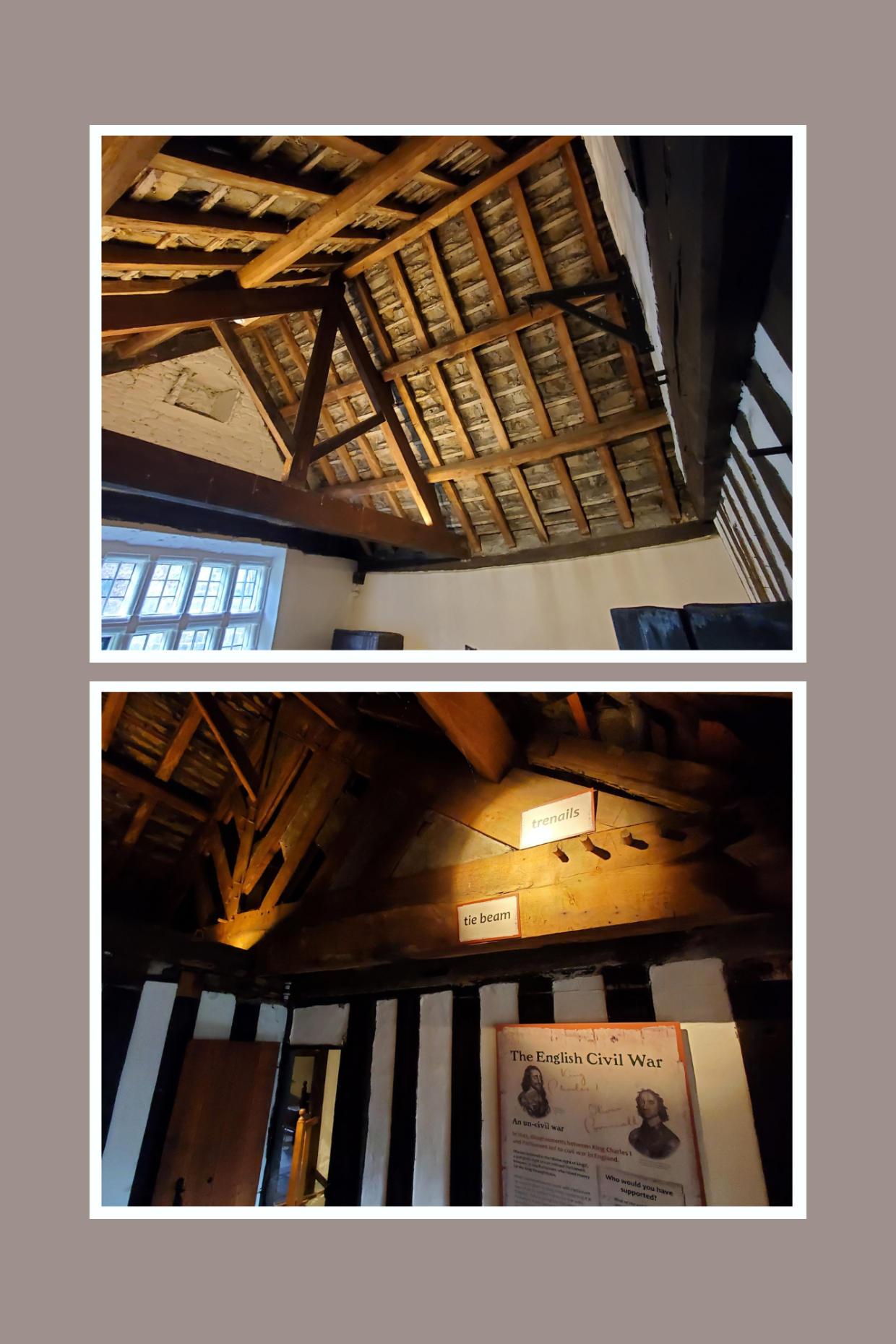Another heritage open day introduced me to Oakwell Hall near Bingley in West Yorkshire. It was built in 1583 by John Batt, whose successor and son William fatefully took the Royalist side in the English Civil War. The hall is also famous for featuring in Charlotte Brontë’s book, Shirley, and has been used as a filming location many times.
The photos above show the impressive roofing structures with their extensive use of trenails and doweling to support the timber framing. Wood, and its products, such as trenails (also ‘treenails’), was economical and widely available building material in the 16th Century. In fact, archaeologists have found traces of wood nails in the excavation of early Germanic sites dating back over 7000 years.
A treenail, also trenail, trennel, or trunnel, is a wooden peg, pin, or dowel used to fasten pieces of wood together, especially in timber frames, covered bridges, wooden shipbuilding and boat building. It is driven into a hole bored through two (or more) pieces of structural wood (mortise and tenon).
wikipedia.org
Roofing structures like these built entirely with trenails and doweling are more common in my home country of Austria. In the UK, however, it’s a dying skillset. According to government research commissioned in 2012, the English charity, Heritage Crafts, employed a total of 210,000 people and contributed £4.4 billion a year to the economy!
Today heritage crafts such as traditional roofing skills, are officially on the “red list”. Only 25% of the UK’s 259 heritage crafts have approved government funded apprenticeships and even fewer are being delivered. This is both sad and ironic given the term “apprenticeship” was initially intended for traditional crafts. Although English Heritage and the Hamish Ogden Foundation are making significant efforts to create new opportunities.
Despite all this and the apparent lack of political will to carry out further research to support heritage skills, some people we spoke to at the heritage open days felt that interest in heritage crafts is slowing reviving, perhaps prompted by people re-evaluating their lives and lifestyles after the Covid lockdowns and pursuing something more satisfying, with more tangible results for their work.
The efforts of volunteers are therefore invaluable to the preservation of these buildings, and you can get involved with projects at Oakwell Hall through their Friends of Oakwell Hall network.
